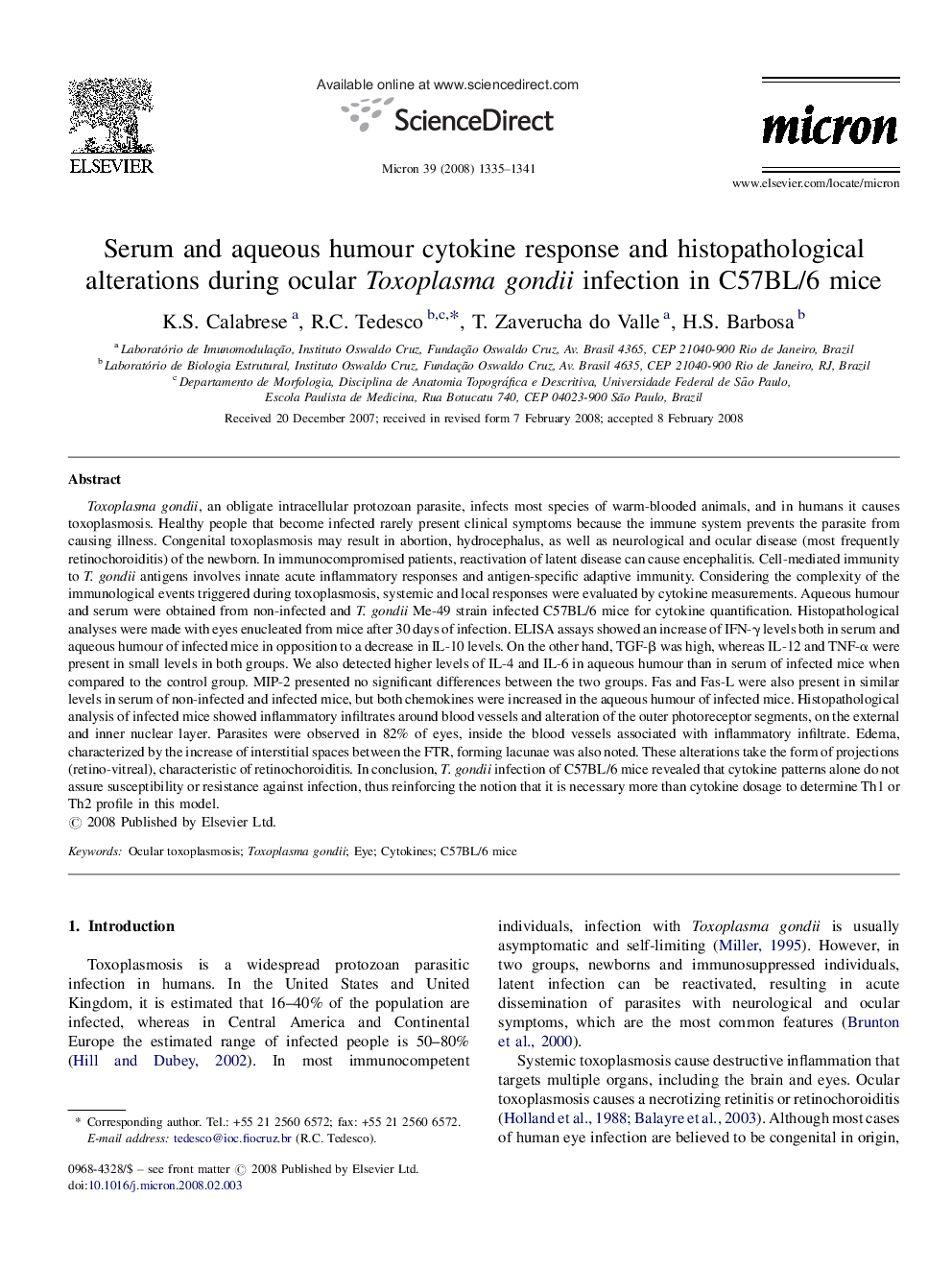| Article ID | Journal | Published Year | Pages | File Type |
|---|---|---|---|---|
| 1589711 | Micron | 2008 | 7 Pages |
Toxoplasma gondii, an obligate intracellular protozoan parasite, infects most species of warm-blooded animals, and in humans it causes toxoplasmosis. Healthy people that become infected rarely present clinical symptoms because the immune system prevents the parasite from causing illness. Congenital toxoplasmosis may result in abortion, hydrocephalus, as well as neurological and ocular disease (most frequently retinochoroiditis) of the newborn. In immunocompromised patients, reactivation of latent disease can cause encephalitis. Cell-mediated immunity to T. gondii antigens involves innate acute inflammatory responses and antigen-specific adaptive immunity. Considering the complexity of the immunological events triggered during toxoplasmosis, systemic and local responses were evaluated by cytokine measurements. Aqueous humour and serum were obtained from non-infected and T. gondii Me-49 strain infected C57BL/6 mice for cytokine quantification. Histopathological analyses were made with eyes enucleated from mice after 30 days of infection. ELISA assays showed an increase of IFN-γ levels both in serum and aqueous humour of infected mice in opposition to a decrease in IL-10 levels. On the other hand, TGF-β was high, whereas IL-12 and TNF-α were present in small levels in both groups. We also detected higher levels of IL-4 and IL-6 in aqueous humour than in serum of infected mice when compared to the control group. MIP-2 presented no significant differences between the two groups. Fas and Fas-L were also present in similar levels in serum of non-infected and infected mice, but both chemokines were increased in the aqueous humour of infected mice. Histopathological analysis of infected mice showed inflammatory infiltrates around blood vessels and alteration of the outer photoreceptor segments, on the external and inner nuclear layer. Parasites were observed in 82% of eyes, inside the blood vessels associated with inflammatory infiltrate. Edema, characterized by the increase of interstitial spaces between the FTR, forming lacunae was also noted. These alterations take the form of projections (retino-vitreal), characteristic of retinochoroiditis. In conclusion, T. gondii infection of C57BL/6 mice revealed that cytokine patterns alone do not assure susceptibility or resistance against infection, thus reinforcing the notion that it is necessary more than cytokine dosage to determine Th1 or Th2 profile in this model.
